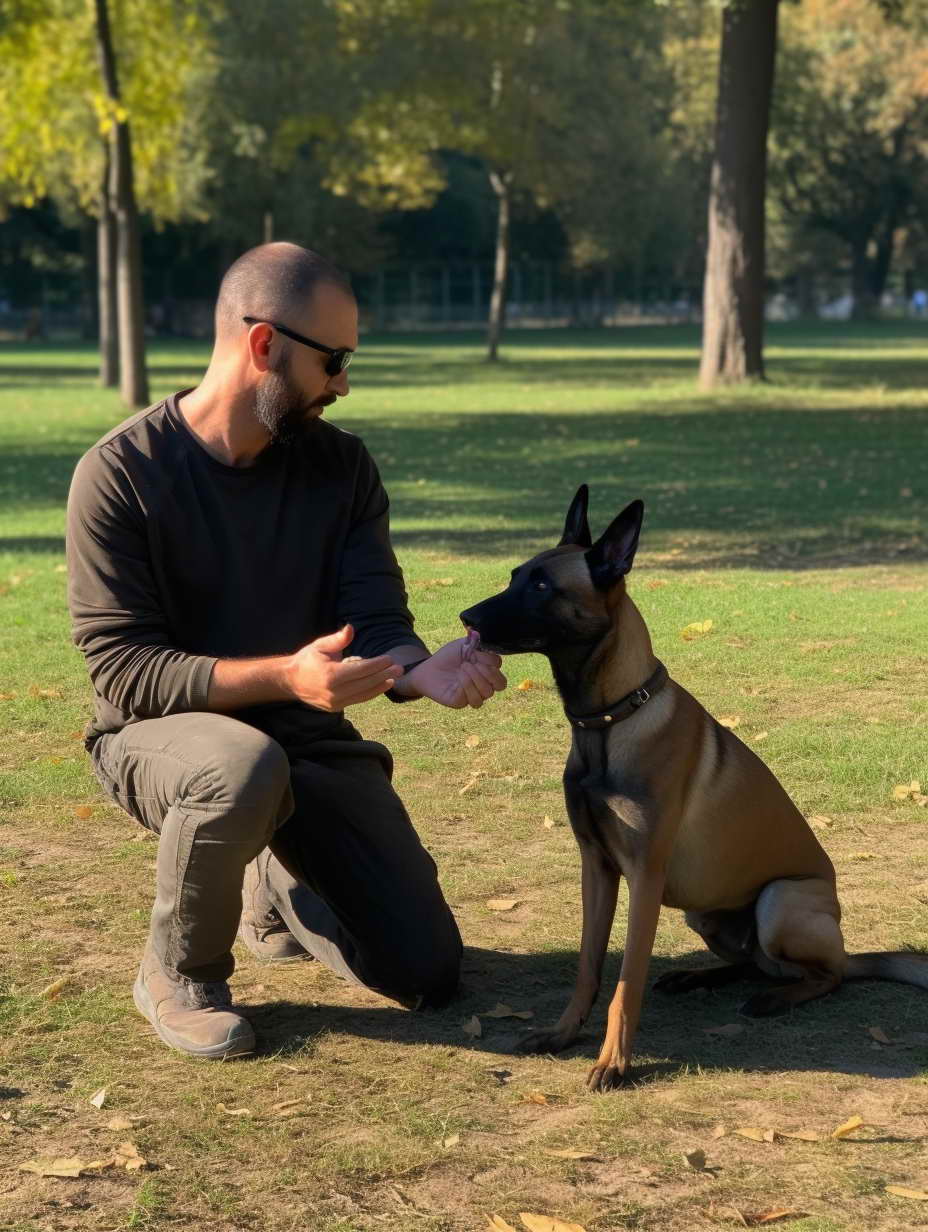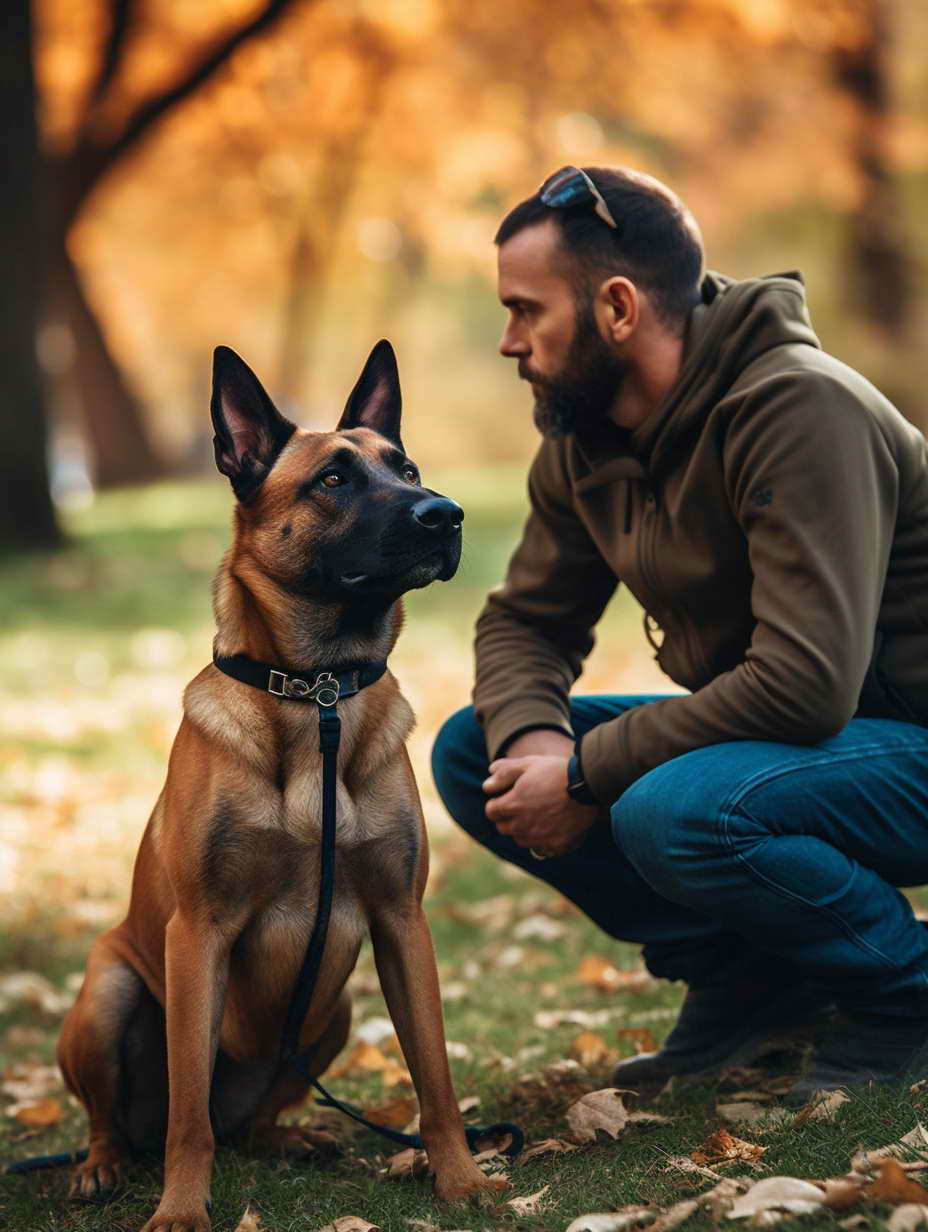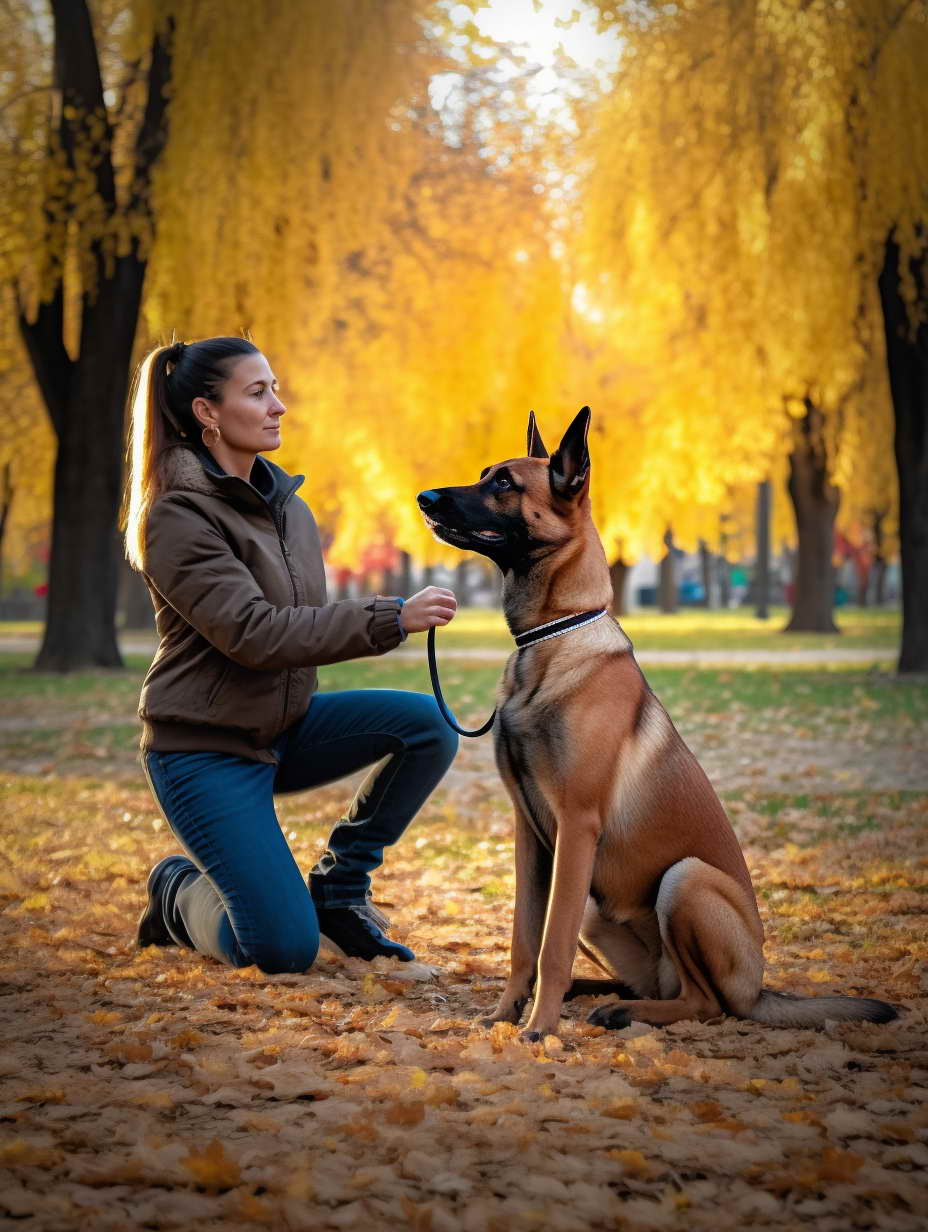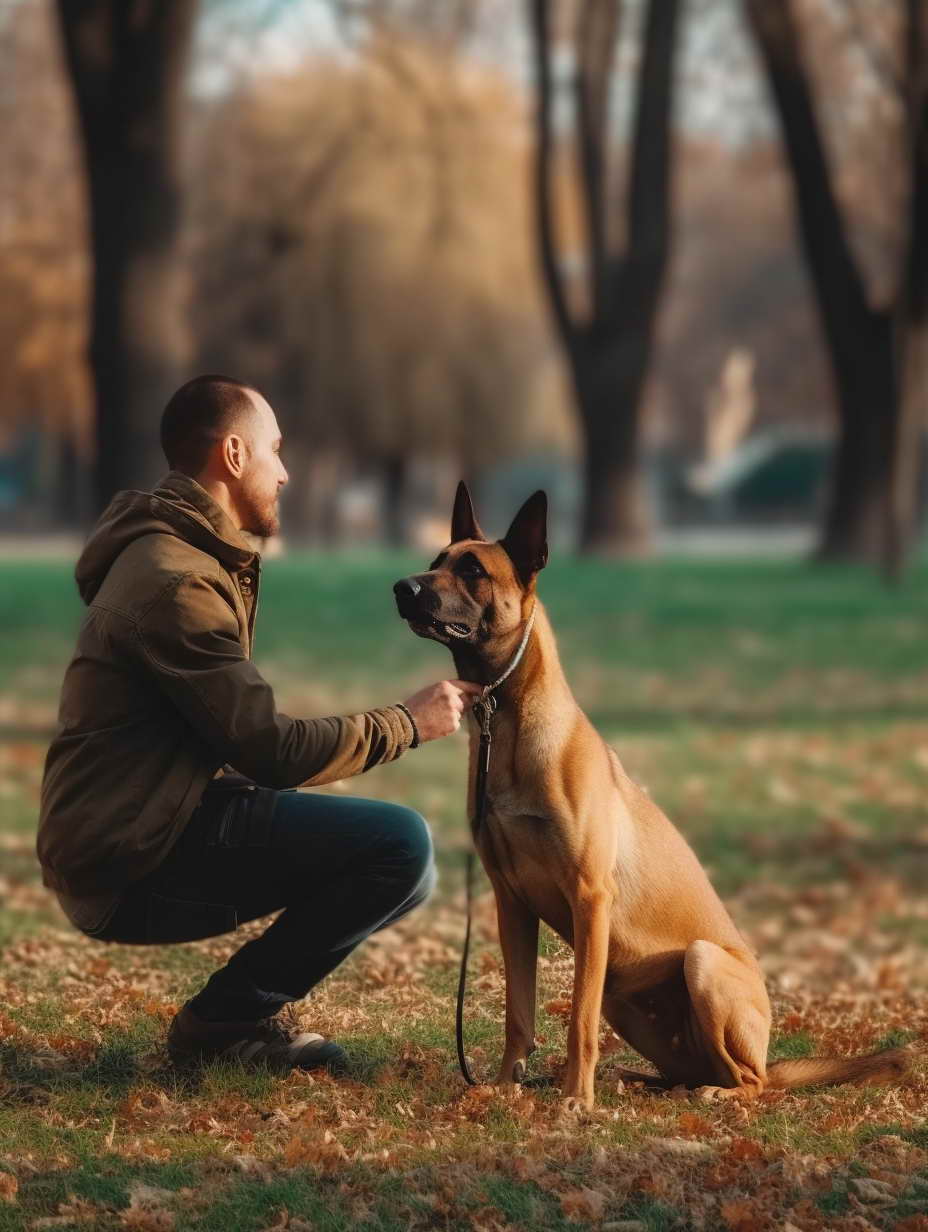Unleashing the Best Practice for Dog Training Belgian Malinois
Welcome to the world of Belgian Malinois training, where loyalty, intelligence, and agility come together in one magnificent breed. If you’re lucky enough to have a Belgian Malinois as your canine companion, you’re in for a thrilling adventure. These dogs are known for their boundless energy and unwavering dedication. To ensure a harmonious relationship with your Malinois, it’s crucial to embark on the journey of dog training Belgian Malinois style.
The Foundation: Dog Training Belgian Malinois
Dog training for Belgian Malinois is a journey that begins with a strong foundation. Before diving into the specifics of commands and techniques, it’s essential to grasp the unique characteristics of this remarkable breed and establish a solid groundwork for effective training.
Understanding Your Belgian Malinois
Belgian Malinois, often referred to as “Maligators,” are renowned for their exceptional intelligence and unwavering loyalty. Originally bred as herding dogs, they have evolved into versatile working dogs, excelling in roles such as police work, search and rescue, and even competitive obedience. To train them effectively, you must understand their innate traits:
1. Intelligence:
Belgian Malinois are exceptionally intelligent dogs. They have an innate ability to quickly grasp commands and problem-solving tasks. However, their intelligence can also make them independent thinkers, so consistent training is crucial.
2. Energy and Drive:
Malinois are known for their boundless energy and high work drive. They thrive on physical and mental stimulation and may become restless or exhibit destructive behavior if not adequately exercised and mentally engaged.
3. Loyalty:
These dogs form strong bonds with their owners and are incredibly loyal. Building trust and a positive relationship is fundamental to their training.
4. Sensitivity:
Belgian Malinois are sensitive to their owner’s emotions and reactions. Harsh training methods or punishments can harm the bond between you and your dog, so positive reinforcement is highly recommended.
Positive Reinforcement
Positive reinforcement is the cornerstone of Belgian Malinois training. This approach focuses on rewarding desired behavior rather than punishing unwanted behavior. Here’s how it works:
1. Rewards:
Use treats, praise, toys, or affection as rewards when your Malinois follows a command or exhibits good behavior. The key is to make the reward immediate and highly appealing to your dog.
2. Timing:
Timing is crucial in positive reinforcement. Deliver the reward within seconds of your dog’s correct action to ensure they associate the behavior with the reward.
3. Consistency:
Be consistent in your use of rewards. Set clear expectations and reward your Malinois every time they meet those expectations. This consistency reinforces the desired behavior.
4. Clicker Training:
Clicker training, which uses a small device that makes a clicking sound, can be particularly effective with Belgian Malinois. The click serves as a precise marker for the desired behavior, making it easier for your dog to understand.

Consistency is Key
Consistency in training is vital to avoid confusion for your Belgian Malinois. Consider the following aspects of consistency:
1. Family Involvement:
Ensure that all family members are on the same page regarding training commands and expectations. Inconsistency among family members can confuse your dog.
2. Timing:
Use the same commands consistently, and reinforce them with rewards promptly. Consistency in your timing helps your Malinois understand what’s expected.
3. Routine:
Establish a training routine. Consistent training sessions at the same time each day create a predictable environment that aids in learning.
4. Patience:
Understand that training takes time, and your dog may not grasp commands immediately. Patience is essential to maintain a positive training experience.
Socialization
Socialization is a critical aspect of Belgian Malinois training. Early and extensive socialization helps your dog become well-adjusted and confident in various situations. Here are some tips for effective socialization:
1. Exposure:
Introduce your Malinois to different people, animals, and environments from a young age. Gradually increase the complexity of these interactions.
2. Positive Experiences:
Ensure that socialization experiences are positive. Reward your dog for calm and friendly behavior during social interactions.
3. Ongoing Socialization:
Socialization is not a one-time event. Continue exposing your Malinois to new experiences throughout their life to maintain their confidence and adaptability.
4. Professional Help:
If you encounter challenges during socialization, consider seeking assistance from a professional dog trainer or behaviorist.
Patience and Persistence
Training a Belgian Malinois can be a rewarding yet challenging endeavor. It’s essential to approach the process with patience and persistence:
1. Individual Pace:
Remember that every dog learns at its own pace. Avoid frustration and maintain a positive attitude, even if progress seems slow.
2. Consistent Training:
Consistency in training sessions and techniques is key to success. Stick to your chosen methods and routines.
3. Professional Guidance:
If you encounter difficulties or behavior issues that you’re unsure how to address, don’t hesitate to consult a professional dog trainer with experience in working with Belgian Malinois.

Dog Training Belgian Malinois – The Basic Commands
Training your Belgian Malinois in basic commands is the essential building block for a well-behaved and obedient canine companion. These commands not only ensure your dog’s safety but also strengthen the bond between you and your Malinois. Let’s explore the fundamental commands you should teach your Malinois and how to go about it effectively.
Sit
The “sit” command is one of the most basic and essential commands for any dog, including Belgian Malinois. Teaching your Malinois to sit provides a solid foundation for more advanced training. Here’s how to do it:
1. Prepare Treats:
Begin by preparing some small, tasty treats that your Malinois loves. These treats will serve as rewards during the training.
2. Get Your Dog’s Attention:
Ensure your dog is in a calm state and has your attention. You can achieve this by holding a treat in front of their nose to grab their focus.
3. Raise the Treat:
Slowly raise the treat above your dog’s head, so their nose follows it. As their nose moves upward, their rear end should naturally lower to the ground.
4. Use the Command:
As your dog’s rear end touches the ground, immediately say “sit” in a clear, firm, yet gentle tone.
5. Reward and Praise:
The moment your Malinois sits, promptly reward them with the treat and offer enthusiastic praise. Use phrases like “Good sit!” to reinforce the behavior.
6. Repeat and Practice:
Practice this command in short, frequent sessions. Be consistent with your cues and rewards, and gradually decrease the use of treats as your dog becomes proficient.
Stay
The “stay” command is vital for your Malinois’s safety, as it ensures they remain in one place until given permission to move. Here’s how to teach it:
1. Start with Sit:
Begin with your Malinois in a sitting position. Ensure they are calm and focused on you.
2. Open Palm:
Hold your hand, palm open and facing your dog, toward their face, and say “stay” in a clear, authoritative tone.
3. Take a Step Back:
While maintaining eye contact, take a single step back from your dog. Keep your hand raised, palm facing them.
4. Pause and Return:
Pause for a moment, then return to your dog. If they remain in the “stay” position, reward and praise them.
5. Increase Distance and Duration:
Gradually increase the distance and duration of the “stay” as your dog becomes more comfortable with the command. Always reward and praise for compliance.
Come
The “come” command, also known as recall, is crucial for ensuring your Malinois returns to you promptly, especially in potentially dangerous situations. Here’s how to teach it:
1. Leash and Long Line:
Start with a long leash in a safe, enclosed area. Attach the leash to your dog’s collar.
2. Get Their Attention:
Grab your dog’s attention by calling their name in a friendly tone.
3. Say “Come”:
In a clear, enthusiastic voice, say “come” while gently pulling on the leash to guide your dog towards you.
4. Reward and Praise:
As your Malinois reaches you, offer a tasty treat and plenty of praise. Make the experience positive and rewarding.
5. Release:
To teach your dog that they can return to their normal activities after coming to you, use a release command like “okay” or “free.”
6. Practice Off-Leash:
Once your dog reliably comes to you on a leash, practice the “come” command off-leash in a secure, fenced area.
Down
The “down” command instructs your Malinois to lie down, which can be useful for keeping them calm and controlled. Here’s how to teach it:
1. Start with Sit:
Begin with your dog in a sitting position. Ensure they are relaxed and attentive.
2. Use a Treat:
Hold a treat near your dog’s nose and lower it slowly towards the ground. As your dog follows the treat, they should naturally lie down.
3. Add the Command:
While your dog is in the down position, say “down” clearly and firmly.
4. Reward and Praise:
As soon as your Malinois is down, reward them with the treat and offer verbal praise. Use phrases like “Good down!”
5. Practice and Consistency:
Practice the “down” command regularly, gradually phasing out the use of treats as your dog becomes proficient. Be consistent with your cues and rewards.
Heel
Belgian Malinois have a tendency to pull on the leash, making the “heel” command essential for enjoyable walks. Teaching your dog to walk politely by your side is achievable with patience and practice:
1. Start Walking:
Begin walking with your dog on a leash. Hold the leash securely but loosely, allowing some slack.
2. Use the Command:
Say “heel” in a firm yet calm voice as you start walking. Use your dog’s name to get their attention.
3. Maintain Position:
Ensure your Malinois walks close to your side, ideally with their shoulder aligned with your leg. If they begin to pull, gently correct them with a slight leash tug.
4. Reward and Praise:
Praise your dog and offer treats when they walk beside you without pulling. Reinforce the behavior with positive reinforcement.
5. Practice Regularly:
Consistent practice during walks will help your Malinois understand and adhere to the “heel” command. Gradually, your dog will learn to walk calmly by your side.
By mastering these basic commands—sit, stay, come, down, and heel—you will establish a strong foundation for further training and ensure that your Belgian Malinois becomes a well-mannered and obedient companion. Remember that patience, consistency, and positive reinforcement are the keys to success in dog training.
Dog Training Belgian Malinois – Advanced Training
Once you’ve successfully mastered the basics of dog training with your Belgian Malinois, it’s time to take things up a notch. Advanced training not only stimulates your dog mentally but also taps into their innate capabilities. This level of training is perfect for Malinois owners looking to challenge their dogs and explore new horizons. Here are some advanced training options:
Agility Training
Agility training is an exciting and physically demanding sport that your Malinois will thrive in. It involves navigating a timed obstacle course that includes jumps, tunnels, weave poles, and more. Here’s how to get started with agility training:
1. Foundation Work:
Before introducing your dog to agility equipment, ensure they have a solid foundation in basic obedience commands like “sit,” “stay,” and “come.” These commands are essential for safety during agility training.
2. Introduce Equipment:
Start by introducing your Malinois to one piece of agility equipment at a time. Use treats and praise to encourage them to explore and interact with the equipment.
3. Gradual Progression:
Progress gradually from simple to more complex equipment. For example, begin with jumps at a low height and gradually raise it as your dog becomes comfortable.
4. Positive Reinforcement:
Use positive reinforcement to reward your Malinois for successfully navigating obstacles. Make the experience fun and rewarding.
5. Seek Professional Guidance:
Consider enrolling in agility classes with a certified trainer who specializes in the sport. They can provide expert guidance and help you and your dog master the skills needed for agility competitions.
Obedience Competitions
Belgian Malinois often excel in obedience competitions due to their intelligence and willingness to please. These competitions test your dog’s discipline, responsiveness, and ability to follow commands. Here’s how to get involved in obedience competitions:
1. Advanced Training Classes:
Enroll your Malinois in advanced obedience training classes with a focus on competition-level skills. These classes will cover precise commands and heelwork.
2. Learn the Rules:
Familiarize yourself with the rules and requirements of obedience competitions in your area or at the specific event you plan to enter.
3. Practice, Practice, Practice:
Consistent and rigorous practice is key to success in obedience competitions. Work on perfecting commands, off-leash control, and intricate routines.
4. Seek Professional Guidance:
Consider working with a professional dog trainer who specializes in obedience competition preparation. They can provide valuable insights and help fine-tune your dog’s skills.
5. Compete Locally:
Start by entering local obedience trials to gain experience and assess your dog’s performance in a competition setting.
Scent Work
Belgian Malinois have an exceptional sense of smell, making them ideal candidates for scent work training. This type of training taps into their natural instincts and provides mental stimulation. Here’s how to get started:
1. Choose a Scent:
Select a specific scent, such as essential oils or a training scent, that your dog will be trained to locate.
2. Introduction to Scent:
Begin by introducing your Malinois to the chosen scent in a controlled environment. Let them associate the scent with a reward.
3. Hide and Seek:
Gradually progress to hiding the scent in various locations around your home or yard. Encourage your dog to use their nose to find the hidden scent.
4. Increase Complexity:
As your dog becomes proficient, increase the complexity of the search by using multiple scents or hiding the scent in more challenging locations.
5. Formal Scent Work Classes:
Consider enrolling in formal scent work classes or workshops. Professional trainers can help refine your dog’s scent detection skills.
Protection Training
Protection training should only be pursued if you have specific needs, such as security or personal protection. It’s essential to consult with a professional trainer experienced in protection work. Here are some considerations:
1. Expert Guidance:
Seek out a highly experienced protection dog trainer with a strong understanding of Belgian Malinois’ temperament and capabilities.
2. Assess Suitability:
Not all Malinois are suitable for protection training. A thorough assessment of your dog’s temperament and behavior is crucial.
3. Gradual Progression:
Protection training should progress gradually, starting with basic obedience and bite work under close supervision.
4. Legal and Ethical Considerations:
Be aware of legal and ethical considerations associated with owning a protection-trained dog. It’s essential to have a deep understanding of the responsibilities involved.
Remember that advanced training should always prioritize the safety and well-being of your dog. Seek professional guidance when venturing into any advanced training area to ensure both you and your Belgian Malinois have a positive and successful experience.
Conclusion
Dog training Belgian Malinois style is a rewarding endeavor that strengthens the bond between you and your furry friend. With patience, consistency, and positive reinforcement, you can unlock your Malinois’ full potential and enjoy a harmonious companionship that lasts a lifetime.


Leave a Reply